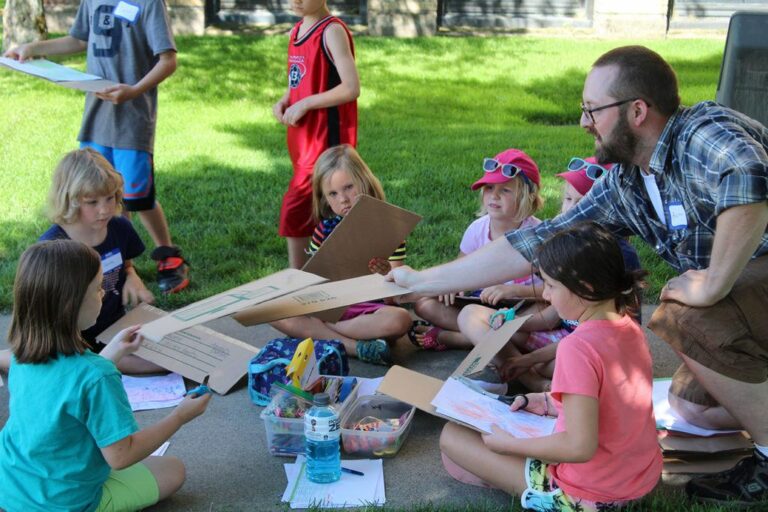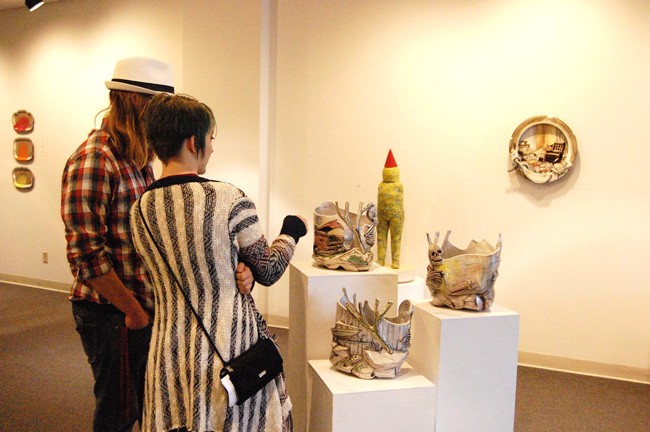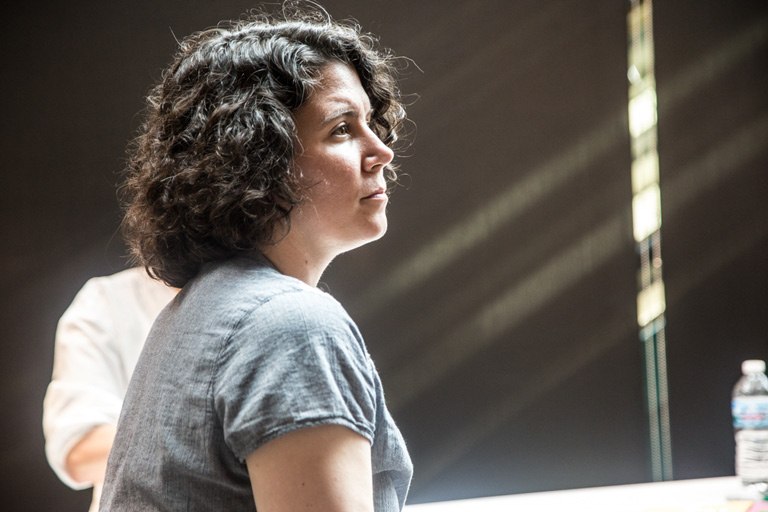MacRostie Art Center

Creative Leadership in Itasca County
Katie Marshall doesn’t identify as an artist. However, as the executive director of the MacRostie Art Center in Grand Rapids, her job requires a lot of creativity. “MacRostie is the only visual art center serving Itasca County, so one of our challenges and one of our opportunities is trying to be a lot of things to a lot of people,” said Katie.
“There’s value in creativity and creative thinking. In rural areas, that comes through a lot. You have to be creative to make a living in a rural area.”
Katie Marshall, Executive Director, MacRostie Art Center
Sparking creativity is at the center of MacRostie’s work. It carries out its mission of inspiring a creative community through two galleries, four studios, adult and youth classes, a shop that sells the art of local artists, and a range of other programming. “There’s value in creativity and creative thinking,” said Katie. “In rural areas, that comes through a lot. You have to be creative to make a living in a rural area.”
Katie and her husband – a jazz musician – both grew up in Itasca County in northern Minnesota, but moved away for school. “Both of us making the decision to move back to Itasca County maybe wasn’t the most obvious choice,” said Katie. However, both felt really rooted to the community, and the presence of a vibrant art scene in Grand Rapids made the decision to move home easier. Katie also felt personally drawn to the work: “I view the arts and arts organizations as active players in community development. That continues to be a big part of what I love about working at MacRostie.”

Culture Institutions as Community Magnets
Katie and her husband are not alone in deciding to move home. Katie said she’s seen high school classmates return, as well as met new friends who intentionally choose Grand Rapids because of arts scene and a sense of forward momentum. “I was talking with a business owner who knew he wanted to relocate somewhere in northeastern Minnesota, and he chose Grand Rapids specifically because of the arts and the schools,” said Katie.
Katie knows first-hand the importance of cultural institutions in making a place a vibrant place to call home. As a director of an art nonprofit in a rural community – even one that shares a home with a great philanthropic partner, Blandin Foundation – there are still certain resources that aren’t available to the organization. “It’s definitely frustrating to look out across the landscape of funding and see how little we’re eligible for, because so much is targeted toward metro areas,” stated Katie. Only 2 percent of arts foundation funding goes to rural communities, according to a Helicon Collaborative report from 2017.
Equity Builder: Growing Reserves
Despite that, MacRostie has been strong financially, typically operating with a surplus which has allowed it to build up a reserve fund. However, MacRostie’s building needed a new roof, along with some other renovations, and they were exploring the possibility of a loan. When Katie learned about Propel Nonprofits’ Equity Builder Loan Program, she was fully on-board. “It was one of those things that seemed too good to be true, but I told my board ‘I haven’t found a catch yet,’” recalled Katie.

The Equity Builder Loan Program was created for arts and culture nonprofits around Minnesota serving as cultural institutions but without the same financial backing as their mainstream peers. The goal is to allow creative, innovative leaders like Katie to continue to build financial strength, long-term sustainability, and the freedom to focus on mission over survival. Katie herself is a perfect example of someone who learned how to be an excellent financial leader without having a finance background. “I knew how to read a profit and loss statement when I started the job, but I wouldn’t say I necessarily knew what to do with a balance sheet,” she admitted.
Through many trainings sponsored by Blandin Foundation, including many from Propel Nonprofits, she came up the financial learning curve and grew the organization’s financial muscle as well as its programming. The Equity Builder loan was attractive because a portion of it is forgiven as long as MacRostie also adds to its savings fund on a monthly basis. “We have a pretty solid reserve fund, but we didn’t want to deplete those reserves through the roof project,” explained Katie. “So, we’re able to keep building our reserve fund as well as have funds for when unexpected building costs arrive – which in fact, has already happened with this project.”
Another benefit of the Equity Builder Loan Program is the cohort model, which connects people like Katie with the leaders and finance directors of 20 other participating nonprofits around Minnesota. “I’m all about peer learning, and I’m so excited to be part of this group,” said Katie at the first cohort gathering in May 2018.
Boosting Reach and Capacity
With an infrastructure investment through the Equity Builder program, Katie is also thinking about adding a donor database to improve fundraising capability – “right now I have 16 different Excel spreadsheets.”
As MacRostie continues to build its reserves and think about what being a hub for the community looks like, the organization is taking on some new programming. It started an artist residency program with fourth graders because in the local school district there’s no art classes until eighth grade. “Not every kid is going to grow up to be an artist, but every kid will grow up better prepared for life by being a creative thinker,” said Katie. Through programming like this, MacRostie continues to pave the way for the next generation to creatively invest in their community.
To learn more about MacRostie Art Center, visit its website.
Featured Image: Art in the Park class, a partnership with Minneapolis College of Art and Design. Photo: Ian Hanesworth
